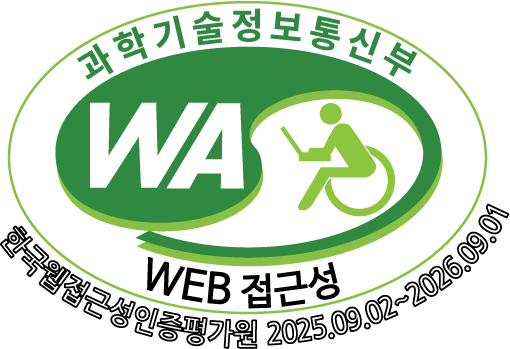요약문 1. 제 목 : 2024년 국내외 인공지능 산업 동향 연구 2. 연구 배경 및 목적 디지털 심화시대에 기술 선점은 국가와 기업에게 중대한 경쟁 요소로 부상하고 있다. 과거처럼 기술 선도국의 전략을 추격하는 것만으로는 더 이상 충분하지 않으며, 디지털 환경에서의 선도적 위치 확보는 지속적인 성장을 위한 필수 조건이 되었다. 이러한 상황에서 새로운 유망 기술을 신속하게 감지하고, 효과적으로 개발 및 확산하는 능력은 디지털 강국으로의 도약과 지속 가능한 성장을 위해 필수적이다. SW 유망기술 발굴은 전략적으로 매우 중요한 요소로 인식되지만, 대부분의 연구는 유망분야 및 토픽의 동향을 다루는 데 초점을 맞추고 있어서 구체적인 기술군에 대한 정보를 제공하는 연구가 부족한 상황이다. 이에 본 연구는 디지털의 기반이되는 소프트웨어(SW) 유망 기술 발굴에 중점을 두어, 국가 및 기업이 급변하는 디지털 환경에 능동적으로 대응할 방안을 제안하고, 디지털 경쟁력을 강화하는 데 필요한 근거로 활용할 기초자료를 생성하고자 한다. 3. 연구의 구성 및 방법 본 연구는 총 6장으로 구성되어 있다. 제1장에서 디지털 심화시대에 SW의 중요성과 SW유망기술 발굴의 필요성을 밝히며, 이를 통한 정책 마련에 필요한 기초자료 제공한다는 목적을 제시한다. 제2장에서는 유망기술의 개념과 특성을 설명하고, 유망기술 발굴이 기업 경쟁력에 미치는 영향을 국내외 연구를 통해 분석한다. 제3장에서는 유망기술을 예측하기 위한 데이터 및 분석 방법론을 검토하고, 제4장에서는 특허 데이터와 소프트웨어 산업 연계 방법, 텍스트 마이닝 및 토픽 모델링을 통한 SW 유망기술 발굴 방법론을 제시한다. 제5장에서는 세부 산업별로 도출한 유망기술을 정리하고, 제6장에서는 정책적 시사점과 연구의 한계 및 향후 연구 방향을 제시한다. 본 연구는 SW유망기술 발굴을 위해 다음과 같이 양적 및 질적 연구방법을 병행하였다. 첫째, 국내외 연구논문, 연구보고서, 언론기사를 통해 유망기술의 발굴 방법, 활용 데이터, 기술 동향을 파악했다. 둘째, 특허분석 및 산업계 전문가 10인의 인터뷰를 통해 기술 후보군 검증과 신뢰성 확보, 연구방법론에 대한 자문을 수행했다. 셋째, 특허 데이터베이스를 활용한 정량분석으로, 텍스트 마이닝과 토픽 모델링 방법을 사용하여 R 프로그램을 통해 유망분야 및 기술을 도출했다. 이 연구는 전문가의 직관과 경험을 데이터 분석과 결합하여 객관적이고 전문적인 결과를 도출하고자 했다. 4. 연구 내용 및 결과 본 연구에서는 미국시장에 등록된 특허정보를 수집하여 텍스트 마이닝과 토픽모델링을 수행하였으며, 추가적으로 전문가 자문, 논문 및 보고서 등의 내용과 통합적으로 검토해서 SW세부산업(게임SW, 패키지SW, IT서비스, 인터넷SW 등)에서 총 33개의 유망기술을 발굴하였으며, 유망기술들은 각각 세부 산업별로 게임SW가 9개, 패키지SW가 7개, IT서비스 7개, 인터넷SW 10개 등으로 분류하여 소개한다. 각 해당기술이 어떻게 활용되며, 인공지능, 빅데이터, 클라우드, 블록체인 등 신SW기술들과 어떤 시너지를 발휘할 수 있는지에 대한 추가정보를 제시한다. 추가정보는 인터넷 검색, 최신 뉴스, 관련 논문, 다양한 유망기술 보고서 등의 신뢰할 수 있는 자료를 통해 심도 있게 조사한 결과를 바탕으로 제시하였다. 이 기술들은 데이터 분석, 보안, 사용자 인터페이스, 상호작용 최적화, 네트워크 등 다양한 영역에서 SW혁신을 이끌어내며, SW산업을 넘어 타산업의 디지털 전환과 산업 고도화를 앞당기는 데 핵심적역할을 할 것이다. 게임SW분야에서는 고급 데이터 스트림 처리 및 최적화 프레임워크, 적응형 신경망 시스템, 확장현실 기술 등이 플레이어의 몰입감과 상호작용을 강화시킬 것이다. 이 기술들은 게임 내 경험을 풍부하게 하고, 사용자 맞춤형 콘텐츠를 제공함으로써 게임 산업의 경쟁력을 강화할 것이다. 패키지 소프트웨어 영역에서는 지능형 데이터 융합, 보안 분석 프레임워크, 실시간 3D 재구성 등의 기술이 데이터 관리와 분석의 효율성을 높여 업무 효율성을 개선할 것이며, 보안을 강화시킬 것 이다. 이러한 기술들은 비즈니스 프로세스와 의사결정을 지원하고, 다양한 산업 분야에서 혁신을 이끌 것으로 예상된다. IT 서비스 분야에서는 적응형 암호화 접근 제어, 양자 키 분배 시스템, 분산 지능 아키텍처 등이 정보 기술의 안전성과 협업 효율성을 개선할 것이다. 이 기술들은 조직의 IT 인프라 관리 및 보안을 강화하고, 데이터 기반의 의사결정을 지원할 것이다. 마지막으로, 인터넷 소프트웨어 분야에서는 뇌-컴퓨터 인터페이스, AI 기반의 디자인 시스템, 데이터 스토리텔링 등이 사용자 경험과 참여를 증진시킬 것이다. 이 기술들은 데이터의 가치를 극대화하고, 사용자에게 더 풍부하고 유익한 정보를 제공할 것으로 기대된다. 이러한 유망 기술들은 산업 전반에 걸쳐 혁신을 촉진하며, 기업과 조직의 경쟁력을 강화하는 동시에 사용자의 삶의 질을 개선하는 데 기여할 것이다. 5. 정책적 활용 내용 본 연구 결과는 대한민국 SW산업의 진흥을 위한 전략 수립에 필수적인 정보를 제공한다. 정부 관계자들은 이러한 결과를 기반으로 SW 지원정책 분야의 우선순위를 결정하고 향후 연구개발과 사업화를 지원할 수 있는 방향을 설정하는 데 참고가 될 것이다. 또한 SW산업 및 결합기술과 관련된 진흥사업을 수행하는 전담기관들의 연구개발 사업기획의 방향성을 제시하는 데 참고자료로 활용될 것이다. 6. 기대효과 본 연구 결과는 산업, 정부, 교육 및 연구기관 측면에서 각각 시사점을 제공할 수 있을 것이다. 첫째, 산업계에는 SW유망기술, 유망기술과 시너지를 낼 수 있는 결합기술, 활용분야 등을 제시함으로써 기술 개발 및 사업 재편에 대한 전략적 방향설정에 활용할 수 있을 것이다. 나아가 본 연구결과를 토대로 효율적인 기술 투자와 개발을 진행하여 성공적인 비즈니스 모델을 형성할 수 있을 것으로 기대한다. 둘째, 정부차원에서는 연구 결과를 기반으로 SW유망기술 개발과 확산을 촉진하는 정책 수립에 활용할 수 있을 것이다. 이는 디지털 변혁에 선도적 정책지원으로 기술패권에서 우위를 선점하는 데 기여할 수 있을 것이다. 마지막으로 본 연구의 결과는 대학 및 연구 기관에게 유망 기술에 기반한 교육 및 훈련 프로그램을 개발과 SW분야의 연구개발 활동의 방향성을 수립하는 데 활용할 수 있는 기반자료가 될 것이다.




